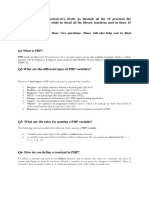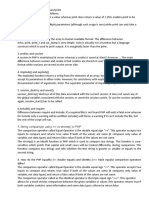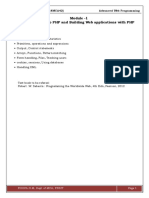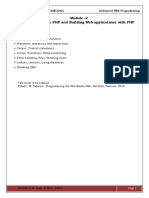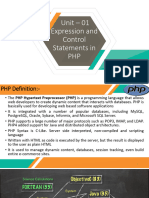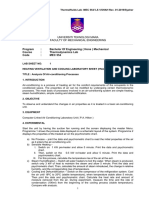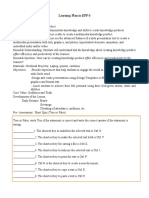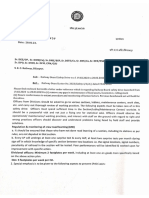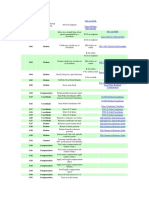0% found this document useful (0 votes)
11 views3 pagesWeb Technology Unit-1 - 2 Marks
The document provides a comprehensive overview of PHP, covering its definition, unique features, and various functionalities such as echo statements, comments, variables, and data types. It also lists operators used in PHP, including arithmetic, comparison, and logical operators, as well as the concept of operator precedence. Additionally, it explains the difference between == and === operators in PHP.
Uploaded by
dhanesh.mukkamCopyright
© © All Rights Reserved
We take content rights seriously. If you suspect this is your content, claim it here.
Available Formats
Download as PDF, TXT or read online on Scribd
0% found this document useful (0 votes)
11 views3 pagesWeb Technology Unit-1 - 2 Marks
The document provides a comprehensive overview of PHP, covering its definition, unique features, and various functionalities such as echo statements, comments, variables, and data types. It also lists operators used in PHP, including arithmetic, comparison, and logical operators, as well as the concept of operator precedence. Additionally, it explains the difference between == and === operators in PHP.
Uploaded by
dhanesh.mukkamCopyright
© © All Rights Reserved
We take content rights seriously. If you suspect this is your content, claim it here.
Available Formats
Download as PDF, TXT or read online on Scribd
/ 3












